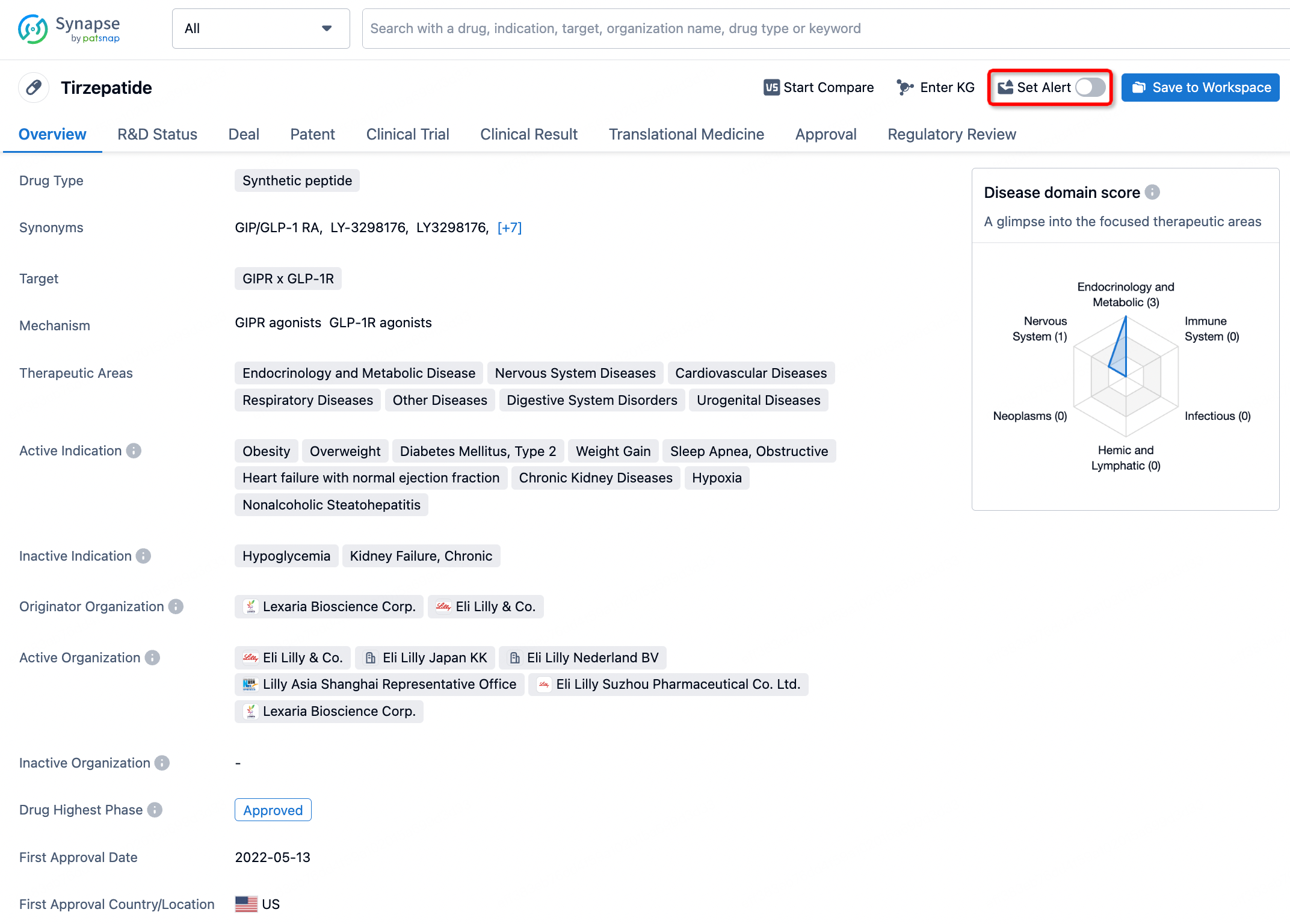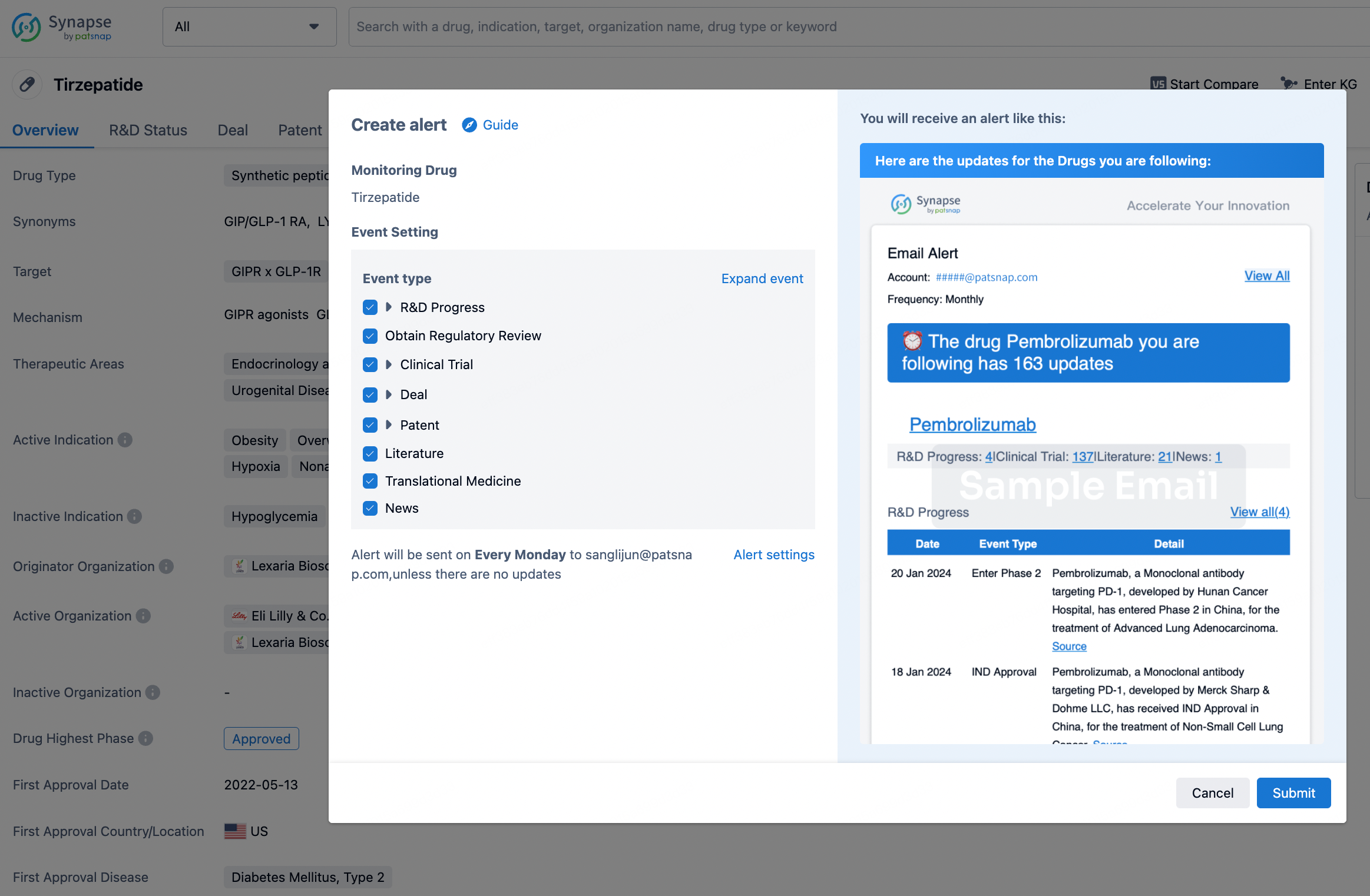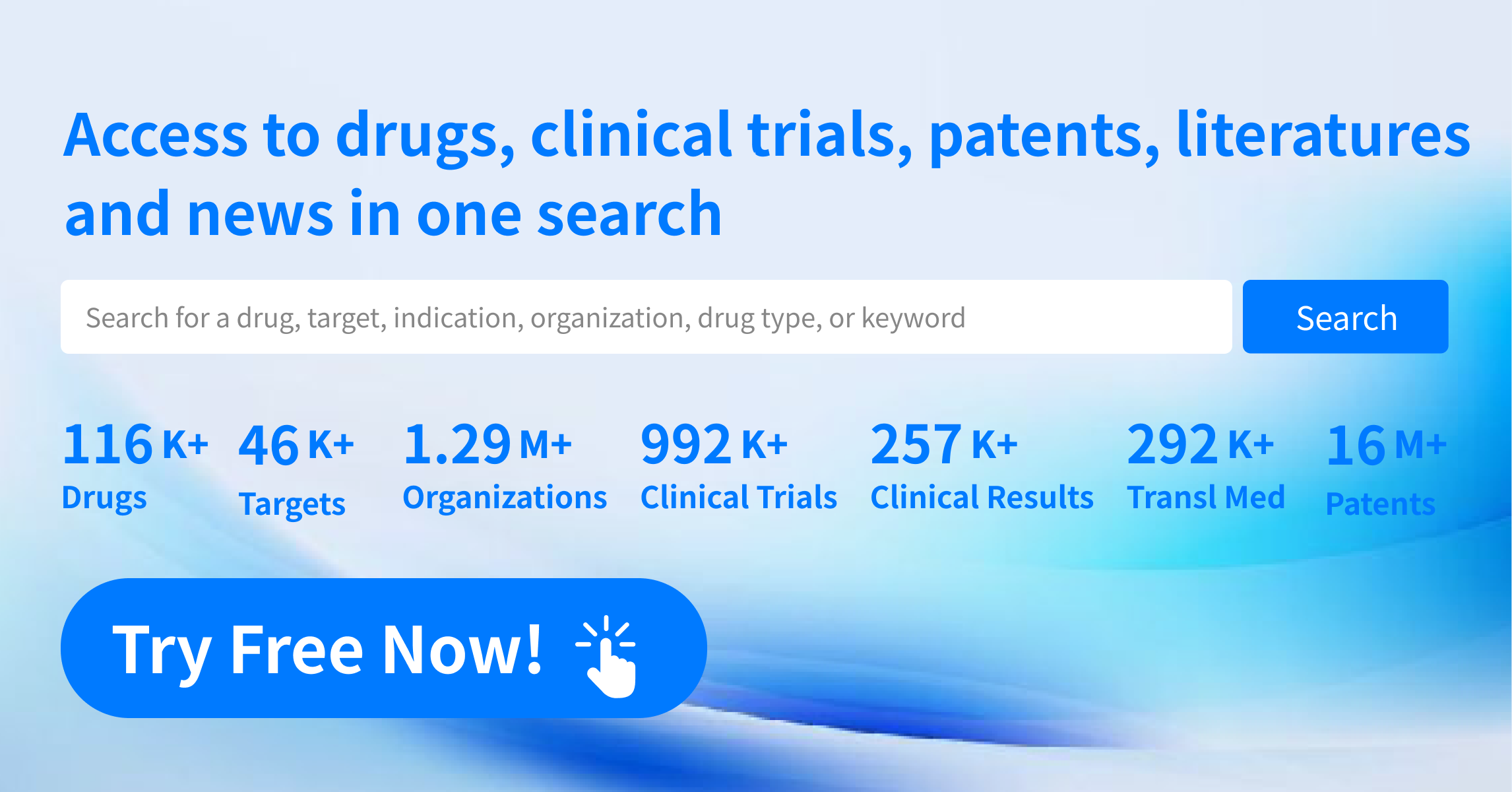Request Demo
What are the side effects of Ethambutol Hydrochloride?
12 July 2024
Ethambutol Hydrochloride is an antibiotic primarily used in the treatment of tuberculosis (TB). While it is an effective medication for combating the Mycobacterium tuberculosis bacterium, it is not without its potential side effects. Patients undergoing treatment with Ethambutol Hydrochloride should be aware of these possible adverse reactions, as early detection and prompt management are crucial for maintaining overall health.
One of the most serious side effects of Ethambutol Hydrochloride is optic neuritis, an inflammation of the optic nerve that can lead to vision problems. Symptoms to watch for include blurred vision, changes in color perception, and visual field defects. These issues can be reversible if the medication is discontinued promptly; however, if left untreated, they could result in permanent vision loss. Regular eye examinations are recommended for individuals on Ethambutol therapy to detect any early signs of optic neuritis.
Another potential side effect of Ethambutol is peripheral neuropathy, a condition affecting the nerves outside the brain and spinal cord. This can manifest as numbness, tingling, or pain in the hands and feet. While less common than optic neuritis, it is still a significant concern and should be reported to a healthcare provider immediately.
Gastrointestinal disturbances are also commonly reported side effects. Patients may experience symptoms such as nausea, vomiting, and abdominal pain. These symptoms can often be managed with supportive care, such as taking the medication with food or using anti-nausea medications prescribed by a healthcare provider.
Hepatotoxicity, or liver toxicity, is another serious side effect associated with Ethambutol Hydrochloride. Symptoms of liver dysfunction include jaundice (yellowing of the skin and eyes), dark urine, fatigue, and persistent nausea or vomiting. Regular monitoring of liver function tests is advised during the course of treatment to detect any signs of hepatotoxicity early.
Allergic reactions, although rare, can also occur with the use of Ethambutol. Signs of an allergic reaction include rash, itching, swelling, severe dizziness, and difficulty breathing. If any of these symptoms develop, it is imperative to seek medical attention immediately.
In some cases, patients may experience cutaneous reactions such as rash or itching. While these are generally less severe than other side effects, they can still cause discomfort and may require medical intervention if they persist or worsen.
Ethambutol can also affect uric acid levels in the body, potentially leading to conditions such as gout. Patients with a history of gout or elevated uric acid levels should be closely monitored, and appropriate preventive measures should be taken to avoid exacerbation of these conditions.
Finally, some individuals may experience general symptoms such as headache, dizziness, or confusion. These side effects are usually mild and transient, but they should still be communicated to a healthcare provider to ensure they do not indicate a more serious underlying issue.
In conclusion, while Ethambutol Hydrochloride is a vital medication in the fight against tuberculosis, it is not without its risks. Patients should be vigilant in monitoring for any signs of adverse reactions and maintain regular contact with their healthcare providers to manage and mitigate these side effects effectively. Early detection and appropriate management are key to ensuring the safe and effective use of Ethambutol Hydrochloride.
One of the most serious side effects of Ethambutol Hydrochloride is optic neuritis, an inflammation of the optic nerve that can lead to vision problems. Symptoms to watch for include blurred vision, changes in color perception, and visual field defects. These issues can be reversible if the medication is discontinued promptly; however, if left untreated, they could result in permanent vision loss. Regular eye examinations are recommended for individuals on Ethambutol therapy to detect any early signs of optic neuritis.
Another potential side effect of Ethambutol is peripheral neuropathy, a condition affecting the nerves outside the brain and spinal cord. This can manifest as numbness, tingling, or pain in the hands and feet. While less common than optic neuritis, it is still a significant concern and should be reported to a healthcare provider immediately.
Gastrointestinal disturbances are also commonly reported side effects. Patients may experience symptoms such as nausea, vomiting, and abdominal pain. These symptoms can often be managed with supportive care, such as taking the medication with food or using anti-nausea medications prescribed by a healthcare provider.
Hepatotoxicity, or liver toxicity, is another serious side effect associated with Ethambutol Hydrochloride. Symptoms of liver dysfunction include jaundice (yellowing of the skin and eyes), dark urine, fatigue, and persistent nausea or vomiting. Regular monitoring of liver function tests is advised during the course of treatment to detect any signs of hepatotoxicity early.
Allergic reactions, although rare, can also occur with the use of Ethambutol. Signs of an allergic reaction include rash, itching, swelling, severe dizziness, and difficulty breathing. If any of these symptoms develop, it is imperative to seek medical attention immediately.
In some cases, patients may experience cutaneous reactions such as rash or itching. While these are generally less severe than other side effects, they can still cause discomfort and may require medical intervention if they persist or worsen.
Ethambutol can also affect uric acid levels in the body, potentially leading to conditions such as gout. Patients with a history of gout or elevated uric acid levels should be closely monitored, and appropriate preventive measures should be taken to avoid exacerbation of these conditions.
Finally, some individuals may experience general symptoms such as headache, dizziness, or confusion. These side effects are usually mild and transient, but they should still be communicated to a healthcare provider to ensure they do not indicate a more serious underlying issue.
In conclusion, while Ethambutol Hydrochloride is a vital medication in the fight against tuberculosis, it is not without its risks. Patients should be vigilant in monitoring for any signs of adverse reactions and maintain regular contact with their healthcare providers to manage and mitigate these side effects effectively. Early detection and appropriate management are key to ensuring the safe and effective use of Ethambutol Hydrochloride.
How to obtain the latest development progress of all drugs?
In the Synapse database, you can stay updated on the latest research and development advances of all drugs. This service is accessible anytime and anywhere, with updates available daily or weekly. Use the "Set Alert" function to stay informed. Click on the image below to embark on a brand new journey of drug discovery!
AI Agents Built for Biopharma Breakthroughs
Accelerate discovery. Empower decisions. Transform outcomes.
Get started for free today!
Accelerate Strategic R&D decision making with Synapse, PatSnap’s AI-powered Connected Innovation Intelligence Platform Built for Life Sciences Professionals.
Start your data trial now!
Synapse data is also accessible to external entities via APIs or data packages. Empower better decisions with the latest in pharmaceutical intelligence.


